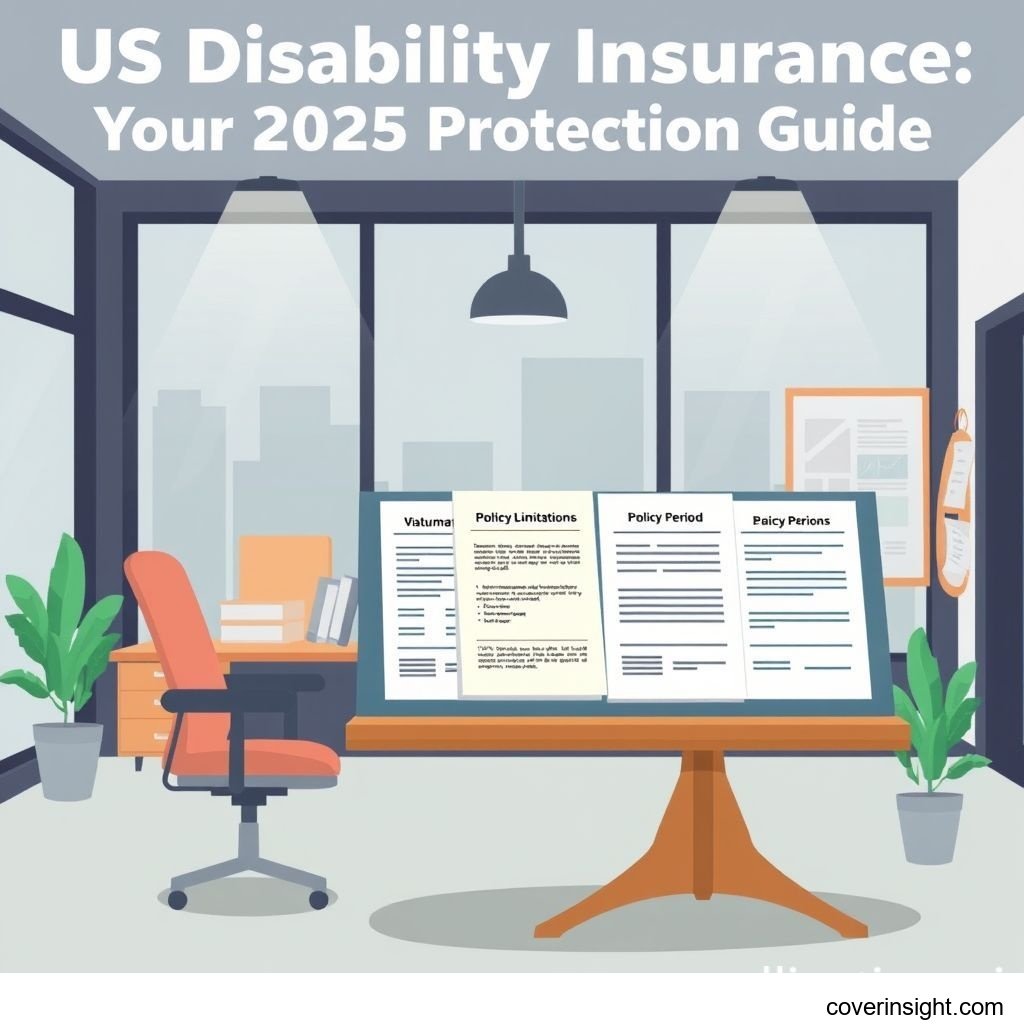Do You Need Disability Insurance in 2025? US Guide
Introduction
As we look towards 2025, understanding your financial safety net, especially when it comes to unexpected health challenges, becomes paramount. Disability insurance is a critical component of that safety net, designed to replace a portion of your income if you're unable to work due to illness or injury. A key feature to consider when exploring options in the US is the waiting period, also known as the elimination period. This is the time between when your disability begins and when your benefits start. Options typically range from 30 to 365 days, with longer waiting periods generally leading to lower premiums. Choosing the right waiting period is crucial as it directly impacts both the affordability of your policy and how quickly you'll receive financial support should you need it.
Coverage Details
What’s Included
Disability insurance policies in the US are generally designed to replace a significant portion of your lost income, typically between 60% to 80% of your gross earnings. Policies can be short-term, covering periods from a few months up to two years, or long-term, extending coverage for many years, often until retirement age. Most comprehensive policies define "disability" in two main ways: "own occupation" (meaning you can't perform the duties of your specific job) or "any occupation" (meaning you can't perform the duties of any job for which you are reasonably suited by education, training, or experience). Many policies include riders that can enhance your coverage, such as a Cost of Living Adjustment (COLA) rider to ensure your benefits keep pace with inflation, or a Future Increase Option (FIO) that allows you to increase your coverage amount as your income grows without further medical underwriting. For a broader perspective on financial protection, you might find more comprehensive information by exploring our [Insurance Resources Global].
Common Exclusions
While disability insurance offers a robust safety net, it's essential to be aware of common exclusions. Most policies will not cover disabilities resulting from self-inflicted injuries, acts of war, or injuries sustained while committing a felony. Pre-existing conditions are also frequently excluded, particularly if they haven't been disclosed or if the disability arises within a specific period (e.g., 12-24 months) after the policy takes effect. While standard pregnancies are generally not covered as a disability, complications arising from pregnancy might be. Some policies may also have limitations on mental health conditions or substance abuse, though this varies significantly between providers. It's always wise to read the fine print; don't just skim the surface.
Cost Analysis
Price Factors
The premium you pay for disability insurance is influenced by several factors, making each policy’s cost unique. Your age and overall health play a significant role; younger, healthier individuals typically pay less. Your occupation is another big one – a desk job will usually have lower premiums than a physically demanding or high-risk profession. The chosen benefit amount (how much income you want to replace), the benefit period (how long you want to receive benefits), and, as mentioned earlier, the waiting period options you select all directly impact your premium. Furthermore, your gender can sometimes affect rates, with women often paying slightly more due to actuarial data showing higher claims rates for certain conditions.
Saving Tips
When it comes to saving a few bucks on your disability insurance without cutting too many corners, there are some smart plays. Firstly, extending your waiting period options from, say, 30 days to 90 or even 180 days can significantly reduce your premiums. If you have an emergency fund that can cover a few months of living expenses, a longer waiting period might be a perfect fit. Secondly, opting for a slightly lower income replacement percentage (e.g., 60% instead of 70%) can also shave off some cost. Maintaining a healthy lifestyle, avoiding smoking, and addressing any health issues promptly can contribute to better rates. Finally, consider if your employer offers group disability insurance, which is often more affordable than an individual policy, though it might not be as comprehensive. For more localized advice, check out [US Insurance Home].
FAQs
-
How much does waiting period options cost?
The cost impact of waiting period options is substantial. A shorter waiting period (e.g., 30 or 60 days) means your benefits kick in sooner, but you'll pay a higher premium. Conversely, choosing a longer waiting period (e.g., 90, 180, or 365 days) can lower your premiums by 10% to 40% or even more, depending on the specific policy and your other risk factors. It's about balancing your immediate financial resilience with your long-term premium affordability.
-
What affects premiums?
Premiums are primarily affected by your age, health status (including medical history and smoking habits), occupation, the amount of monthly benefit you choose, the length of the benefit period, and, critically, the chosen waiting period. Any riders or optional benefits added to the policy will also increase the cost.
-
Is it mandatory?
No, disability insurance is generally not mandatory in the US, unlike auto insurance in most states. However, its importance cannot be overstated. For most working Americans, their ability to earn an income is their most valuable asset.
-
How to choose?
Choosing the right policy involves assessing your financial needs, understanding your budget, and comparing quotes from various reputable insurers. Consider your occupation's risk level, your current savings, and how long you could comfortably live without an income. Look up insurer ratings and read policy definitions carefully. You can compare state-specific policies and regulations via your [State Insurance Departments] or get general guidance from the [National Association of Insurance Commissioners].
-
Consequences of no coverage?
The consequences of not having disability insurance can be severe. Without it, an unexpected illness or injury that prevents you from working can quickly deplete your savings, force you to sell assets, rack up debt, or even lead to reliance on public assistance programs, which often provide only a fraction of your previous income. According to the Social Security Administration, just over 1 in 4 of today’s 20-year-olds will become disabled before reaching age 67. The Council for Disability Awareness also reports that only 10% of disabilities result from accidents, while the vast majority (90%) are due to illnesses, highlighting that it's not just dangerous jobs that carry risk. Consider Sarah, a high school teacher from Texas, who, despite her relatively low-risk job, was diagnosed with multiple sclerosis in her mid-40s. Without her long-term disability policy, which replaced 65% of her income, she would have faced not only the significant medical bills (which her health insurance helped with, but you can learn more about general health coverage at [Healthcare.gov]), but also the immediate inability to pay her mortgage and daily expenses, turning an already tough situation into a catastrophic one. She once told me it felt like "dodging a bullet" financially.
Author Insight & Experience
Based on my experience, living in a country where healthcare costs can hit you like a ton of bricks and employment benefits can vary wildly, having a robust safety net like disability insurance isn't just smart; it's practically a necessity. I've seen firsthand how a sudden illness, something as seemingly innocuous as a persistent back issue or an autoimmune flare-up, can derail a career and decimate a family's finances faster than you can say "out of pocket." It’s not just about protecting your income; it’s about safeguarding your peace of mind and preserving your financial future. As someone who has helped navigate clients through the complexities of US insurance, I can tell you that forgoing this coverage can be a tough pill to swallow if life throws you a curveball.







Comments